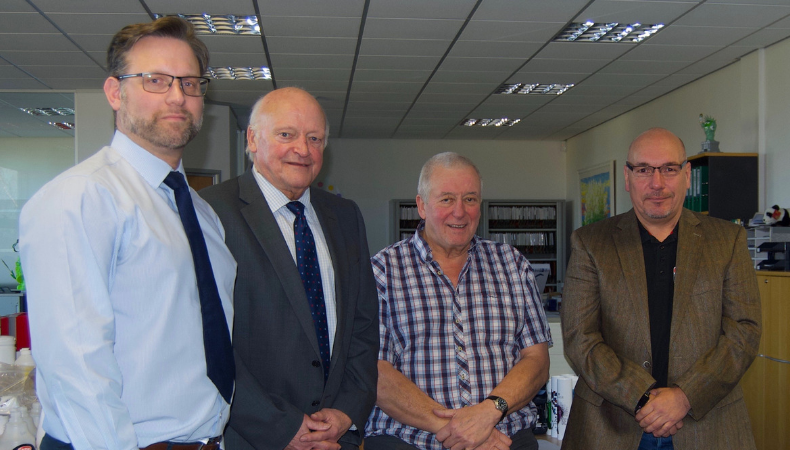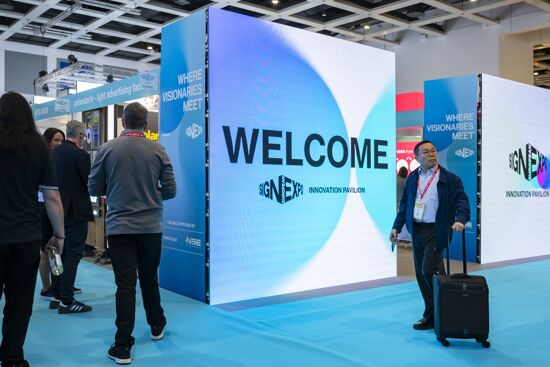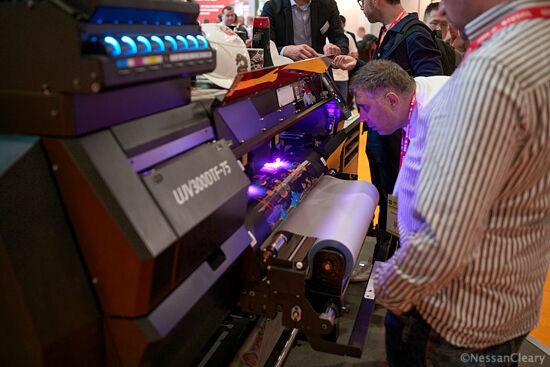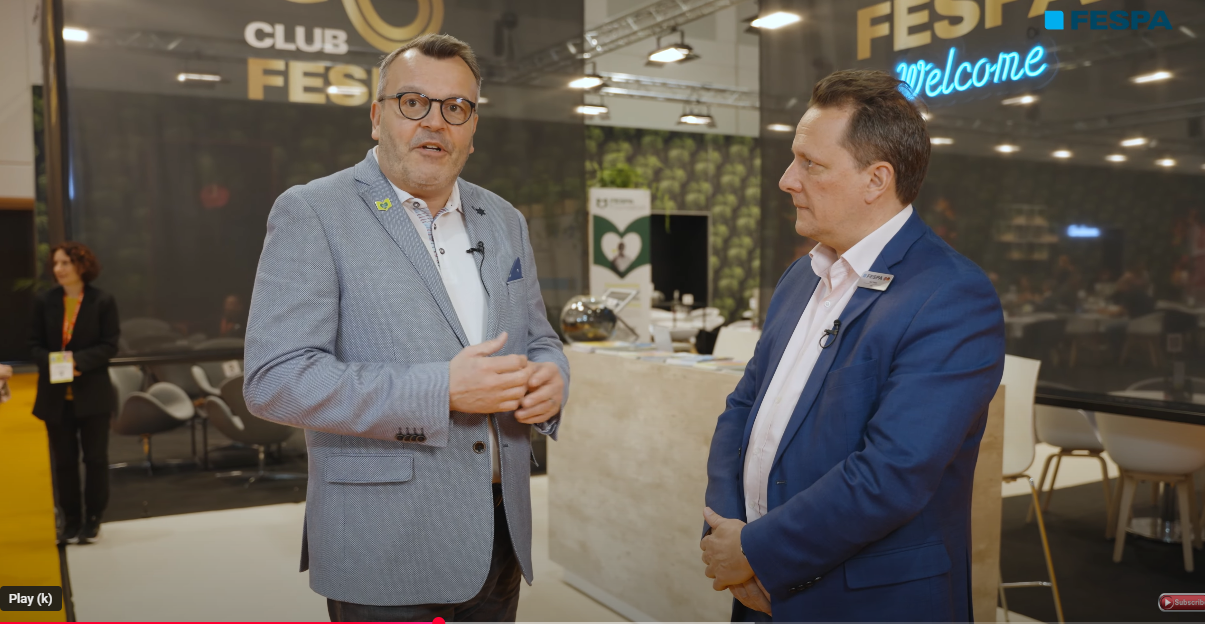Partnership formed to help with industrial screen-printing challenges
.png?width=750)
Jeremy Hall discusses Partners in Screenprint which has been formed because of firsthand experience of companies making poor equipment and materials choices that have had a negative effect on their printing efficiency and economy.
Screen printers all know how complex the set-up can be, but for non-printers looking to integrate the process into their manufacturing line, it can be positively bewildering.
The interaction between the different elements - screen, machinery, substrate and ink requires an in-depth understanding that is rarely the exclusive domain of the suppliers of just one of the elements. However, expensive purchases often are made with little understanding of total suitability for the end-product.
Seeing poor decisions like this made, on a regular basis, and with expensive consequences, has led three long-established companies to pool their experience and knowledge and offer production managers the opportunity to get it right - first time
The clear need for a joint approach to the screen print challenge has led to the formation of a new partnership consultancy….
Partners in Screenprint (PinS) comprises Advanced Screen Technology (ASTL), Marabu UK and Thieme KPX, and has been formed as a result of first hand experience of companies making poor equipment and materials choices that have had a negative effect on their printing efficiency and economy.
Explained Partner, Karsten Soerensen: “Although screen printing is the perfect choice for many industrial applications it is also a complex process that requires not only good knowledge of the individual elements of the process but also the way these elements need to work with each other.
“We had seen so many companies making decision about the components of their printing line without considering some key factors, that we decided to act – in the interests of individual companies and also the reputation of screen printing as a developing process.
“We want to provide accurate, knowledgeable and realistic help and advice and are already helping companies with the most successful, efficient and cost-effective ways to approach their projects.”
PinS has committed to provide initial consultation free of charge.
The three PinS members are united in their belief that in the highly complex world of industrial screen printing it’s the companies who take a more strategic look at their supplier relationships, and adopt a partnership approach, are the ones who will gain the most from the wealth of knowledge within Partners in Screenprint.
A good example of the type of complex issue the Partnership is already starting to address for screen printers, is the printing of conductive elements which also highlights how the different elements of the process need to work together.
Crucial to a successful outcome, are…
Ink selection
As with any ink solution we need to be clear what the customer requires. Questions specific to conductive ink applications may be:
- Resistance required (normally specified in ohms per square at 25um dry ink film)
- Substrate
- End use
- Mechanical requirements (flexibility, humidity resistance, abrasion resistance)
Process controls
Once there is an indication regarding application, to narrow down suitable ink, it is possible to recommend the suitable mesh types and drying. The most critical part of the process is the drying as most performance issues (target track resistance) are related to drying.
Processing
- Conductive inks are not difficult to process, but the method must be consistent, repeatable and measured.
- Pre-press is critical and must be controlled and consistent. (Mesh, tension, angle, eom, Rz)
- The resistance of the conductive in Carbon, Silver, Silver/Silver Chloride etc, can be varied if the solvent is not fully removed from the ink. Residual solvent in the dry ink film will result in a non-conformance, ie Higher than expected track resistance.
- The drying temperature should be ramped gradually. This will ensure that the conductive ink does not ‘skin’ causing solvent to be trapped in the ink film. This is normally achieved using a multi-stage drying conveyor.
- Gradually ramping the temperature will also avoid rapid removal of the solvent which can result in solvent boiling and causing voids in the dry ink film. This will also result in increased track resistance.
- The specified temperature to dry the ink should be used. The solvent in the conductive ink will have a boiling point which is required to remove the solvent from the ink film. If the tech data specifies 110C for ten minutes, this should be the starting point. Using 90C for 40 minutes does not mean that the solvent will be removed.
- Test – When the initial tests are made with the ink, the resistance should be measured against the target. If the resistance is higher than expected with the initial tests, re-run the drying. If there is a difference in the resistance by re-drying the drying schedule needs to be adjusted to either increase the temperature or dwell in the oven.
- Measure – During screen print production there are many variables which might be difficult to control accurately. As a result, the final printed conductive needs to be measured after correct drying off-line, normally with 2 test tracks or worms of known and standardised dimensions printed on either side of the main print. Measurements should include electrical resistance, thickness and registration as a minimum.
FESPA Global Print Expo 2019 is Europe’s largest speciality print exhibition for screen and digital wide format print, textile printing and signage solutions. Visit and discover the available features. Please use promo code FESG902 to register for free.
Topics
Interested in joining our community?
Enquire today about joining your local FESPA Association or FESPA Direct
Recent news

European Sign Expo 2025 - Overall Highlights
European Sign Expo, Europe's leading signage and visual communications exhibition returned to Messe Berlin from 6 - 9 May 2025.
.png?width=550)
How to leverage Adobe PDF Print Engine for efficient, high-quality printing
We speak to Mike Scrutton Director of Print Technology & Strategy at Adobe at the FESPA Global Print Expo 2025 in Berlin about the Adobe PDF Print Engine for commericial print production.

The latest innovations in DTF printing
The Direct-to-Film (DTF) market is experiencing significant growth, with major printers now offering dedicated solutions. Beyond the traditional textile applications, there's a notable expansion into UV DTF technology, allowing for heat-free application to various objects. This evolution, alongside advancements from companies like Epson, Roland, Brother, and Ricoh, indicates DTF's continued diversification and increasing appeal for diverse printing needs.
.png?width=550)
Personalisation Experience 2025 - Overall Highlights
Personalisation Experience 2025 saw the meeting of global visionaries exploring the opportunities of smart manufacturing and personalisation in print through on-demand digital technologies.